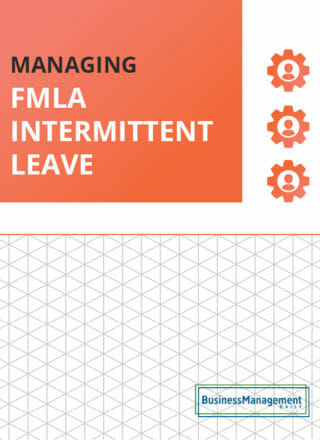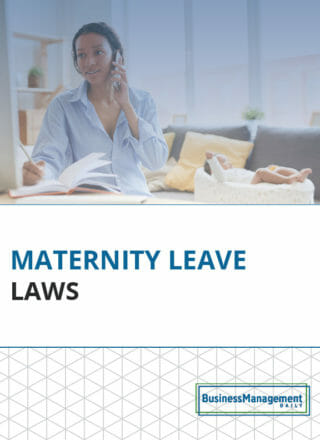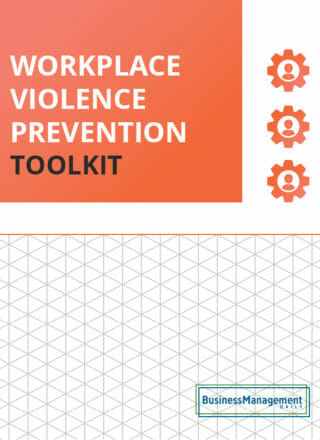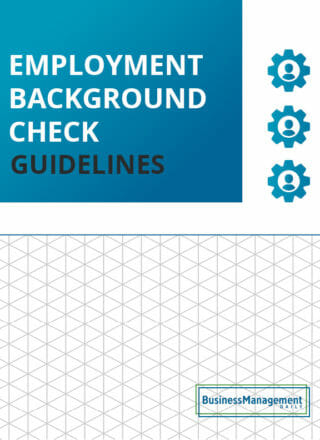Understanding workplace discrimination
Prevalence of workplace discrimination
Are you dealing with instances of employment discrimination at your organization?
If so, you aren’t alone.
Despite advances in society surrounding civil rights and equal employment opportunities, workplace discrimination remains an issue employers must remain vigilant about.
According to a Glassdoor survey, 3 in 5 workers have experienced or witnessed discrimination in the workplace in the United States.
While the most common types of discrimination involve an employee’s age, race, gender, and sexual orientation – they’re by no means the only forms discrimination can take. They’re also not the only categories protected by federal employment laws, something which every employer needs to know.
Currently, it’s illegal in the United States to discriminate against an employee based on the following protected characteristics:
- Race
- Color
- Religion
- National origin
- Sex (including gender identity and pregnancy)
- Age
- Disability
- Genetic information
While these are the official protections federal law provides, specific state laws in the United States protect other characteristics, such as marital status.
The U.S. Equal Employment Opportunity Commission (EEOC) enforces anti-discrimination laws in the United States. Any employee who receives unfair treatment at work can file a discrimination complaint with the EEOC (although each case is reviewed individually).
This is why it’s imperative for employers to:
A) Familiarize themselves with all the federal and state laws applying to workplace discrimination.
B) Enact staunch anti-discrimination policies at work to prevent discrimination from occurring in the first place.
In this guide, I’ll explain everything employers need to know about workplace discrimination. Keep reading to learn more.
What qualifies as workplace discrimination?
Formally defined, discrimination occurs whenever you treat someone differently based on one of their characteristics.
It differs from workplace harassment in that discriminating behavior is more about excluding employees from specific opportunities rather than harassing them with insults and unwanted advances (which is harassment).
However, employment discrimination cases can include offensive jokes. They can also include threats and assaults. The qualifying behavior must be unfair treatment. This treatment must be due to a protected characteristic.
For example, two coworkers might bully another employee. They might think the employee is not doing enough work. This qualifies as harassment. It does not qualify as discrimination.
However, if they’re bullying the employee by cracking jokes about their race or sexual orientation, then it becomes a case of job discrimination.
Another staple of workplace discrimination is the exclusion from certain opportunities, such as promotions, health care benefits, bonuses, and other job opportunities.
Also, it qualifies as discrimination. This happens when hiring managers choose not to hire certain employees. This choice is based on characteristics. These characteristics include age, disability, and religious beliefs. A classic example is a Human Resources department choosing not to hire employees because they think they’re too old.
While the United States government considers this illegal, proving that a candidate was not hired due to discrimination can be challenging.
As previously mentioned, the EEOC is the federal agency enforcing anti-discrimination laws in the United States. If employees or job applicants suspect they’ve been a victim of workplace discrimination, they’re free to file a complaint with the EEOC.
Getting investigated by the EEOC (or taken to federal court) is never a good look for an organization, so prevention is your best defense (more on anti-discrimination policies in a bit).
Which federal laws protect employees from workplace discrimination?
Several federal employment laws have been enacted over the years to encourage fair employment practices in the United States.
At the moment, these are the laws enforced by the EEOC:
- Title VII of the Civil Rights Act of 1964. This law made it illegal to discriminate against someone based on race, color, religion, sex (gender identity, pregnancy), and national origin. You’re also protected from retaliation against discrimination if you A) file a complaint, B) participate in a discrimination proceeding, or C) complain or oppose workplace discrimination. If you file a complaint with the EEOC that gets dismissed, your organization cannot retaliate against you for it. If they do, you’re able to initiate a discrimination lawsuit.
- The Pregnancy Discrimination Act of 1978. This is an official amendment to Title VII of the Civil Rights Act to include pregnancy as a protected class. Ever since this law passed, it’s been illegal to discriminate against a female employee based on their pregnancy status. Employees are also protected during childbirth or if they have a medical condition due to pregnancy or childbirth.
- The Pregnant Workers Fairness Act (PWFA) of 2022. A more recent law, this Act, requires employers to provide reasonable accommodations to employees affected by pregnancy, childbirth, or related conditions. Organizations can avoid providing accommodations. However, they must prove that accommodations would cause undue hardship.
For example, the cost might be too high. Specifically, accommodations for pregnant workers include changing work areas. Also, employers can allow extended breaks. Furthermore, they can reduce lifting and other manual labor. Additionally, providing a hybrid work environment is an option. That is, employees can do some or all work from home
- The Equal Pay Act of 1963 made it illegal to pay men and women different rates if they performed the same work. It also protects employees against retaliation for complaining or filing lawsuits related to equal pay discrimination.
- Title I of the Americans with Disabilities Act (ADA) of 1990. ADA made it illegal to discriminate against employees based on a disability, both physical and mental. Also, it’s important to note that the ADA does not list protected disabilities. Instead, they offer a broad definition of a disability that includes many conditions.
To ADA, a disability is a mental or physical impairment substantially limiting one or more major life activities. Using this definition, physical conditions like being handicapped and mental disorders like anxiety can both qualify as protected disabilities under the ADA.
- Sections 501 and 505 of the Rehabilitation Act of 1973. This law made it illegal to discriminate against federal government employees who have a disability. It also protects against retaliation.
- The Age Discrimination in Employment Act (ADEA) of 1967. After passing this law, it became illegal to discriminate against employees based on age (as long as they’re 40 or older). The Act also protects against retaliation for employees who file complaints, participate in hearings, or support the EEOC complaint process.
- Title II of The Genetic Information Nondiscrimination Act (GINA) of 2008. This law made it illegal for employers to discriminate against employees based on their genetic information. This includes information about an employee’s genetic tests and the genetic tests of their family members.
Family medical history is also protected, so employers aren’t able to discriminate based on existing genetic conditions. The Act also protects employees against retaliation.
What are the different types of workplace discrimination?
Now that you’re familiar with the laws surrounding discrimination, let’s examine the different forms it can take in the workplace (complete with examples).
Age discrimination
Age discrimination (ageism) typically entails excluding older candidates from the same job opportunities as younger candidates, although this isn’t always the case. For example, research shows that 1 in 6 companies hesitate to hire employees in their 20s due to discriminatory reasons.
These include perceived laziness, unprofessionalism, and poor communication skills, but these are all assumptions. The same applies when companies discriminate against older candidates by thinking they’ll be slower or less capable than their younger counterparts.
Ageism can include excluding candidates from job opportunities and unfair treatment or harassing behavior toward employees based on their age. An example would be a younger employee mocking an older coworker by calling them ‘grandpa.’
Disability discrimination
As mentioned, disabilities protected under the ADA can be physical and mental. As long as the disability substantially limits one or more major life activities, it can qualify as a protected condition under the ADA.
For instance, if an employee has an extreme anxiety disorder, they’re likely protected from discrimination under the ADA. Their employer would have to provide reasonable accommodations as long as they don’t impose hardship on the business.
An example of disability discrimination would be overlooking an employee for a promotion because of their anxiety issues.
Race/color discrimination
Race and color are protected under Title VII of the Civil Rights Act. Thus, it’s illegal to discriminate against employees because of their race or color.
Also, race and color discrimination are distinct, which some may not realize.
For example, race-based discrimination is choosing not to hire a Hispanic employee. On the other hand, color-based discrimination is not hiring them because they are “brown.” In either case, both forms of discrimination are illegal. The EEOC enforces these laws.
Sex/gender discrimination
Sex and gender discrimination also include pregnancy and childbirth. Some states (like Alaska, California, and New York) also protect marital status. That means the law prohibits employers from showing bias toward or against married or unmarried employees.
For example, certain positions in law enforcement may prefer employees who aren’t married and don’t have kids, but they aren’t able to hire based on that preference. Instead, they must provide equal opportunities for candidates who are:
- Married
- Pregnant
- Parents
Federal law also prohibits discriminating against male or female candidates. Therefore, companies cannot only hire men or women for specific roles.
Religious discrimination
Religion is a protected class under Title VII of the Civil Rights Act, and employers must also provide reasonable accommodations for religious practices.
For example, a reasonable accommodation is allowing Muslim employees to wear headscarves. Similarly, it includes allowing Jewish employees to wear yarmulkes. This is despite not allowing other types of hats in the office.
National origin discrimination
It’s illegal to discriminate against an employee based on their birthplace or accent. This type of discrimination is distinct from race and color.
Here’s a quick breakdown:
- Race-based discrimination: African American, Hispanic, Arabic, etc.
- Color-based discrimination: Black, brown, etc.
- National origin discrimination: African, Italian, Chinese, etc.
An example of national origin discrimination would be excluding an employee from workplace parties and functions because they’re Italian.
Genetic information discrimination
When GINA was passed in 2008, it was illegal to discriminate against employees based on their genetic information or family medical history.
For instance, an employer may discover that a candidate is genetically predisposed to getting cancer and choose not to hire them based on that fact, which would be illegal.
Sexual orientation and gender identity discrimination
Lastly, you cannot discriminate against an employee’s gender identity or sexual orientation. Examples include being gay or transgender, both of which are protected classes.
How can you prevent workplace discrimination?
Implementing strong anti-discrimination policies in your organization is the best way to avoid discrimination lawsuits.
Here are some tips for doing just that:
- Take a zero-tolerance stance on serious issues. Organizations should not tolerate certain forms of discrimination and harassment, such as threats and physical assault, whatsoever. Make it clear to your employees that engaging in these behaviors will result in immediate termination.
- Reduce hiring bias. Your hiring managers may be engaging in unconscious hiring biases without realizing it. Employ diverse hiring panels and unconscious bias training to ensure a fair hiring process.
- Provide discrimination training for employees. It’s essential to educate your staff on the importance of diversity and the negative impacts of harassment and discrimination. Try incorporating DEI training into your onboarding process to ensure every new employee knows your policies.
- Make it easy for employees to report issues. You need an anonymous reporting system. This ensures employees have a safe way to report harassment. It also provides a reliable way to report discrimination at your organization. Tools like Ethena provide anonymous reporting hotlines for employees, which are worth considering.
Final thoughts: workplace discrimination
Here’s a recap of what we’ve covered so far:
- Workplace discrimination is still a prevalent issue that affects 3 in 5 workers.
- Many federal laws protect employees against various forms of discrimination.
- The EEOC enforces federal anti-discrimination laws, and anyone can file a complaint.
- Providing inclusivity training and anonymous reporting hotlines can help reduce discrimination at work.
More resources:
Preventing retaliation in the workplace ![]()
How to prevent and address workplace bullying ![]()
EEOC wrongful termination claims and how employers can avoid them ![]()
Want more insights like these? Visit Matthew Scherer’s author page to explore his other articles and expertise in business management.





